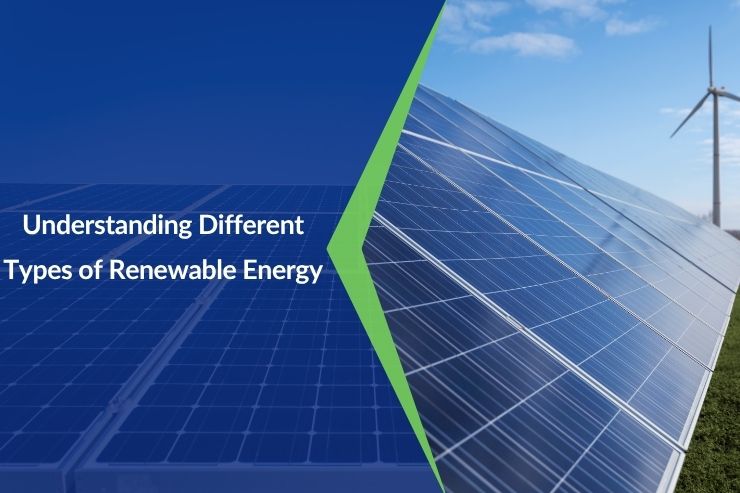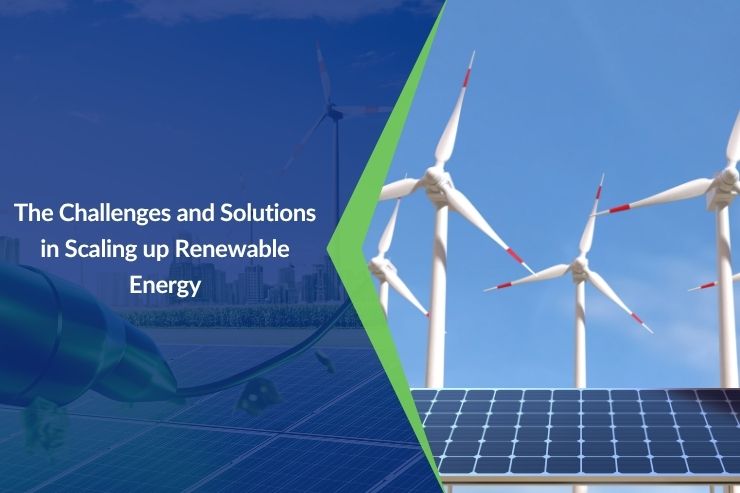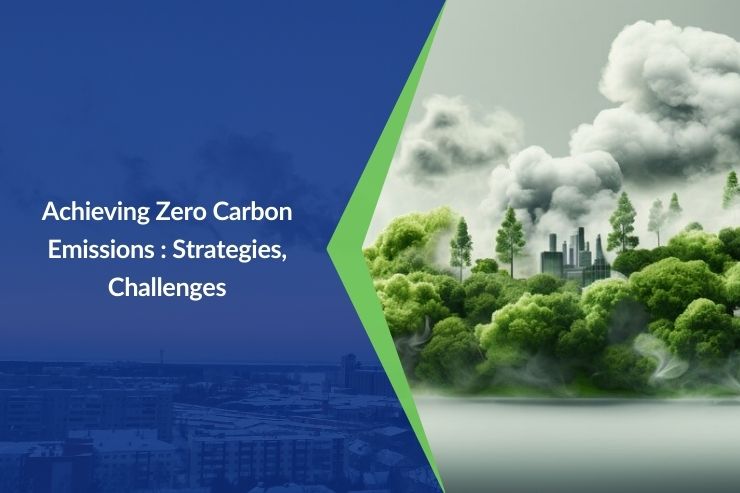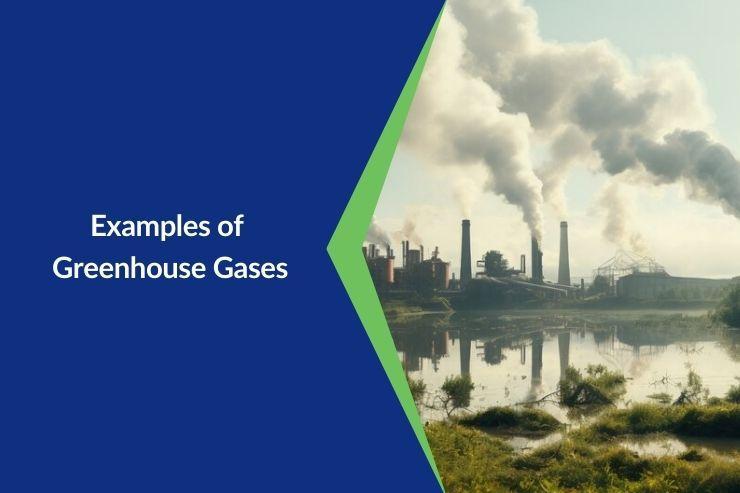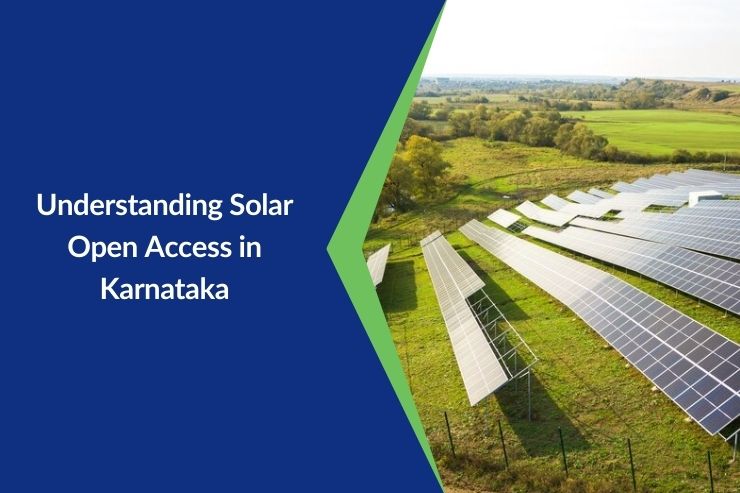Introduction
The role of energy in addressing climate change is crucial. Unlike fuels, renewable energy sources are natural and have a lower impact on the environment. Transitioning to different forms of renewable energy can significantly reduce greenhouse gas emissions, improve energy security and pave the way for sustainable development. As awareness about concerns grows, there is an increasing call to adopt energy solutions.
Types of Renewable Energy
Renewable energy sources harness natural processes that are constantly replenished. They are environmentally friendly and crucial for reducing dependence on fossil fuels.
Here are the types of renewable energy.
1. Solar Energy
2. Wind Energy
3. Hydroelectric Power
4. Biomass Energy
5. Geothermal Energy
6. Tidal Energy
Here, we discuss the types of Renewable Energy.
1. Solar Energy:
Solar power harnesses the sun’s energy through photovoltaic (PV) cells or solar thermal systems. PV cells, commonly found in panels, convert sunlight into electricity using the effect. These panels are widely used in residences and businesses to offer a source of power.
In contrast, solar thermal systems use mirrors or lenses to concentrate sunlight producing heat that can be utilized for generating electricity or heating purposes. This technology proves effective in large scale applications such as power plants due to the abundance and accessibility of sunlight available worldwide.
2. Wind Energy:
Wind power is generated by converting wind motion into energy with the help of wind turbines.
Wind turbines are typically located in wind farms on land or offshore. Onshore wind farms are more common because they are easier to access and cost effective while offshore wind farms benefit from winds despite facing challenges, during installation and maintenance.
Wind turbines work by capturing the winds energy with their blades, which then spin a generator to create electricity. Wind power is a growing energy source known for its efficiency and decreasing costs. However, it faces challenges such as intermittency and the need for locations with wind speeds.
Also Read – wind turbines Power Plant
3. Hydroelectric Power:
Hydroelectric power plants generate electricity by harnessing the energy of moving water making it one of the methods of generating power. There are types of systems :-
Reservoir (or storage) systems :- These systems involve damming rivers to create reservoirs from which water is released to produce electricity.
Run of river systems :- These systems utilize river flows without changing their course minimizing impact.
Pumped storage systems :- These facilities store energy by pumping water to higher elevations during low electricity demand periods releasing it to generate electricity when demand is high.
Hydroelectric power is recognized for its effectiveness in producing amounts of electricity. It can have impacts on aquatic ecosystems and local communities.
4. Biomass Energy:
Biomass energy utilizes materials, like wood, crops and organic waste.
These methods offer applications :-
1. Direct combustion :- Burning biomass directly to produce heat or electricity.
2. Anaerobic digestion :- Breaking down material without oxygen to generate biogas, for heating, electricity or fueling vehicles.
3. Biofuel production :- Converting biomass into fuels such as ethanol and biodiesel to replace fossil fuels in transportation.
While biomass energy is eco friendly and aids in waste management sustainable sourcing practices are crucial to prevent deforestation and ensure long term availability.
5. Geothermal Energy:
Geothermal energy utilizes the Earth’s heat for electricity generation and heating by extracting water and steam from reservoirs through drilling wells. Different power plant types include steam plants that use steam directly from reservoirs to power turbines. Exploring energy sources is vital for a future.
Utilizing the Earth’s heat for power generation involves methods like flash steam plants using pressurized water to create steam for turbines and binary cycle plants transferring heat to a lower boiling point fluid for turbine operation. Geothermal energy is recognized for its reliability and uninterrupted power supply with location limitations, near plate boundaries or volcanic regions.
6. Tidal Energy:
In contrast, tidal energy harnesses the movement of ocean tides to generate electricity using technologies such as barrage systems and tidal stream turbines that capture energy from flows. This source of energy offers reliability and environmental friendliness. It requires geographic conditions and may involve substantial initial investments.
Exploring these energy technologies collectively can play a role in reducing our reliance on fossil fuels addressing climate change concerns and promoting energy self sufficiency. It is crucial to embrace an example of renewable energy resources to create a sustainable energy system for the future.
Frequently Asked Questions
What are the main advantages of renewable energy?
Renewable energy sources are sustainable as they naturally renew themselves. They significantly reduce greenhouse gas emissions and combat climate change. Additionally, they enhance energy security by decreasing dependence on imported fuels and creating employment opportunities in the energy sector.
How do I know which type of renewable energy is best for my location?
The choice of an energy source depends on factors such as location, climate conditions and available natural resources. Solar power is most effective in areas while wind power is ideal for regions with winds. Hydroelectricity requires access to flowing water. Consulting with experts in the field of energy and conducting studies can help you determine the energy option for your specific location.
Are there any drawbacks or challenges associated with renewable energy?
Despite the benefits they offer, renewable energy sources also present challenges. Wind power for example faces intermittency issues due to its reliance on weather conditions. While the initial costs of setting up energy systems can be significant they are often offset by term savings and government incentives. Additionally, certain renewable energy projects may have social impacts underscoring the importance of planning and environmental assessments.
What is the future outlook for renewable energy adoption globally?
The future appears promising for increased adoption of energy solutions driven by advancements in technology cost reductions, and a growing awareness of concerns. Many countries are setting targets for expanding their use of energy and investing heavily in infrastructure to support this transition. With improvements in technology and economies of scale renewable energy is expected to play a role in shaping the global energy landscape towards a more sustainable and resilient future.

